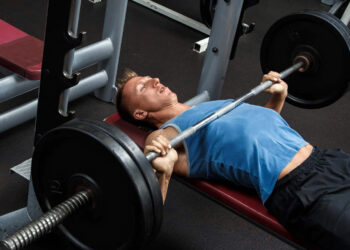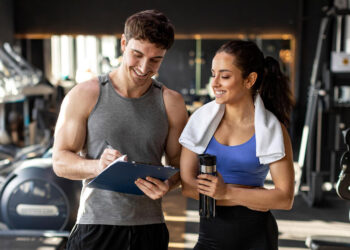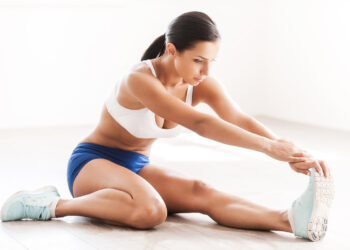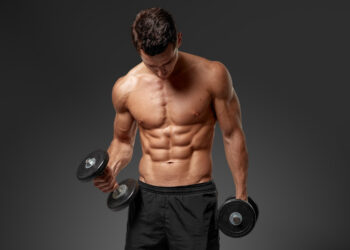Lifters love to lift heavy weights. It’s arguably the most satisfying thing you can do in a gym! Lifting weights builds bigger, stronger muscles, and you can use barbells, dumbbells, and resistance machines to sculpt the body of your dreams or train to perform impressive feats of strength.
Regular strength training can also preserve your muscle mass during a diet. In addition, it can help prevent age-related muscle loss, safeguarding functional fitness in the process.
Male, female, young, or old, lifting weights is good for everybody’s body!
However, while all types of strength training are good for your muscular fitness and overall health, they can take a toll on your joints.
Not only does training with weights put a lot of stress on your joints, which could lead to wear and tear, but it can also cause joint stiffness and a loss of mobility. Muscles often get tighter as they get stronger, especially if you don’t stretch enough.
This problem is compounded by sedentary living, particularly if you spend a lot of time in a fixed position, such as sitting at a desk or driving.
Level Up Your Fitness: Join our 💪 strong community in Fitness Volt Newsletter. Get daily inspiration, expert-backed workouts, nutrition tips, the latest in strength sports, and the support you need to reach your goals. Subscribe for free!
Reduced mobility can make your workouts less productive, too. Impaired mobility means you won’t be able to move your limbs through their full, natural range of motion. So, for example, you won’t be able to squat as deep.
In addition, tight, immobile joints may lead to accommodations during certain exercises that could increase your risk of injury. If you’ve got tight hips, you may find it hard to avoid rounding your lower back during deadlifts, for example.
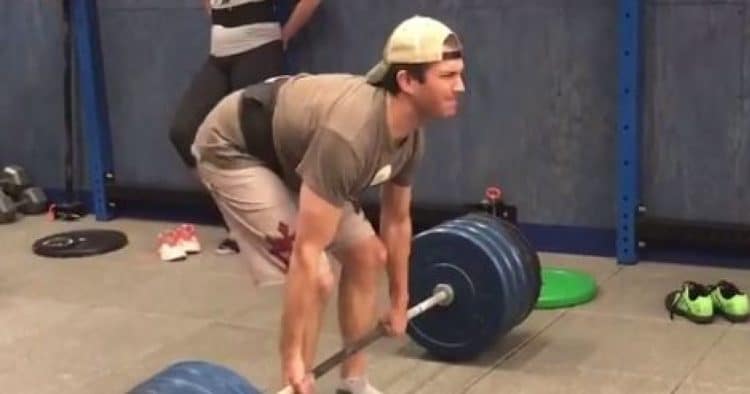
Static stretching can help, but it’s not a particularly time-efficient form of mobility training, as it mostly affects one muscle at a time. Static stretches also tend to relax your muscles, reducing their potential for generating force, which means they’re less than ideal for warm-ups.
The best way to maintain and improve mobility is to move your muscles and joints through large ranges of motion in a smooth, rhythmic manner. Exercises that “flow” are much more time-efficient and better for improving your functional range of motion.
To help you restore lost or maintain your current joint mobility, we’ve created a Five-Minute Mobility Workout for Lifters.
Five-Minute Mobility Workout for Lifters
Do this workout every day to improve or maintain your mobility. You can also do it as part of your pre-lifting warm-up or to break up long periods of sitting or sedentarism. In fact, there is nothing to stop you from doing it several times a day to stay loose and avoid pain and tightness.
Perform each exercise smoothly, increasing your range of motion as you feel your muscles relax and your joints get looser. However, NEVER force the movements, as doing so could result in injury.
Do each of the following exercises for about 60 seconds to total five minutes.
1. Cat Cow
Lower back stiffness and pain are very common. The cat-cow exercise will gently mobilize your spine and decompress your lumbar disks, preparing your body for the more demanding exercises to follow.
How to do it:
- Kneel on all fours with your shoulders directly over your hands and your hips over your knees. Lengthen your neck and look down at the floor. Your spine should be neutral, i.e., slightly arched.
- Lower your head, tuck your hips under, and lift the center of your spine up toward the ceiling, so you look like an angry cat arching its back. Imagine there is an invisible thread pulling your back upward.
- Next, raise your head, tilt your hips backward, and lower your abdomen down toward the floor.
- Alternate smoothly between these two positions 8-10 times or 60 seconds.
2. Downward-Upward Dog
This exercise flows naturally from cat-cow to mobilize your hips, shoulders, and thoracic spine. It also provides a useful stretch for your hamstrings, calves, lats, and pecs.
How to do it:
- From cat-cow, walk your feet out and back into the push-up position. Brace your core, and pull your shoulders down and back.
- Keeping your legs as straight as you can, push your heels into the floor, lift your hips up and back, and gently push your head down between your arms, so your body resembles an inverted V.
- Next, shift your weight forward and, with straight arms, lower your hips down toward the floor. Look up at the ceiling.
- Alternate smoothly between these two positions 8-10 times or 60 seconds.
3. Alternating Lateral Lunge with Overhead Reach
Lateral lunges help mobilize your hips and stretch your hip adductors, which are the muscles on the inside of your thighs. Adding an overhead reach simultaneously mobilizes your shoulders and upper back, making this a very time-efficient exercise.
How to do it:
- Stand with your feet roughly two shoulder-widths apart. Turn your toes slightly outward. Hold your arms in front of your thighs.
- Shift your weight over onto one leg and push your hips backward. Descend until your bent thigh is roughly parallel to the floor. Keep your torso pretty upright.
- As you move, raise your arms up and overhead, like a football referee indicating a touchdown.
- Lower your arms and return to the starting position.
- Switch sides and repeat.
- Alternate smoothly between these two positions 4-6 times or 60 seconds
4. Bootstrapper Squats
This exercise is a great way to prepare your joints and muscles for a lower body workout. It’s an effective way to mobilize your knees and hips and stretch your hamstrings and hip adductors. It’s similar to the Asian squat – another well-known lower body mobility exercise.
How to do it:
- Stand with your feet about shoulder-width apart, toes turned slightly outward. Reach forward and grab your toes.
- Bend your legs and squat down as deeply as you can. Use your arms to pull you down even further. Gently press your knees apart with your elbows. Stay in this position for a couple of seconds.
- Next, while keeping hold of your toes, push your hips up toward the ceiling. Extend your legs as far as your flexibility allows. Again, stay in position for a couple of seconds. Try not to round your back too much.
- Alternate smoothly between these two positions 8-10 times or 60 seconds.
5. Spiderman Lunge with Rotation
Your final exercise is so effective that it’s sometimes described as the only mobility exercise you ever need to do. It’s good for your hips, upper back, and shoulders, so if you only have time for one mobility move, this one should be it. Doing this exercise last means you should be well warmed up, making it easier and more comfortable to do.
How to do it:
- Adopt the push-up position with your arms and legs straight, core braced.
- Step your left foot up and outside your left hand. Bend your rear leg and rest your knee lightly on the floor or keep it straight as your flexibility allows.
- Lift your left arm up and out toward the ceiling and rotate your upper body. Reach around as far as you can so your arms form a T-shape.
- Return your hand to the floor and step back into the push-up position.
- Step in with your right leg and raise your right arm.
- Alternate smoothly between these two positions 4-6 times or 60 seconds.
5-Minute Mobility Workout – Wrapping Up
Mobility is an important but often neglected fitness component. Being able to move your joints through their full and natural range of motion means less pain and stiffness and more productive workouts.
Mobility often declines with age, intense training, and disuse, but it doesn’t have to. And the good news is that you don’t have to dedicate hours to mobility training. Just a few minutes a day can help restore or maintain your mobility.
Do our Five-Minute Mobility Workout for Lifters every day to maintain your joint health and mobility.


